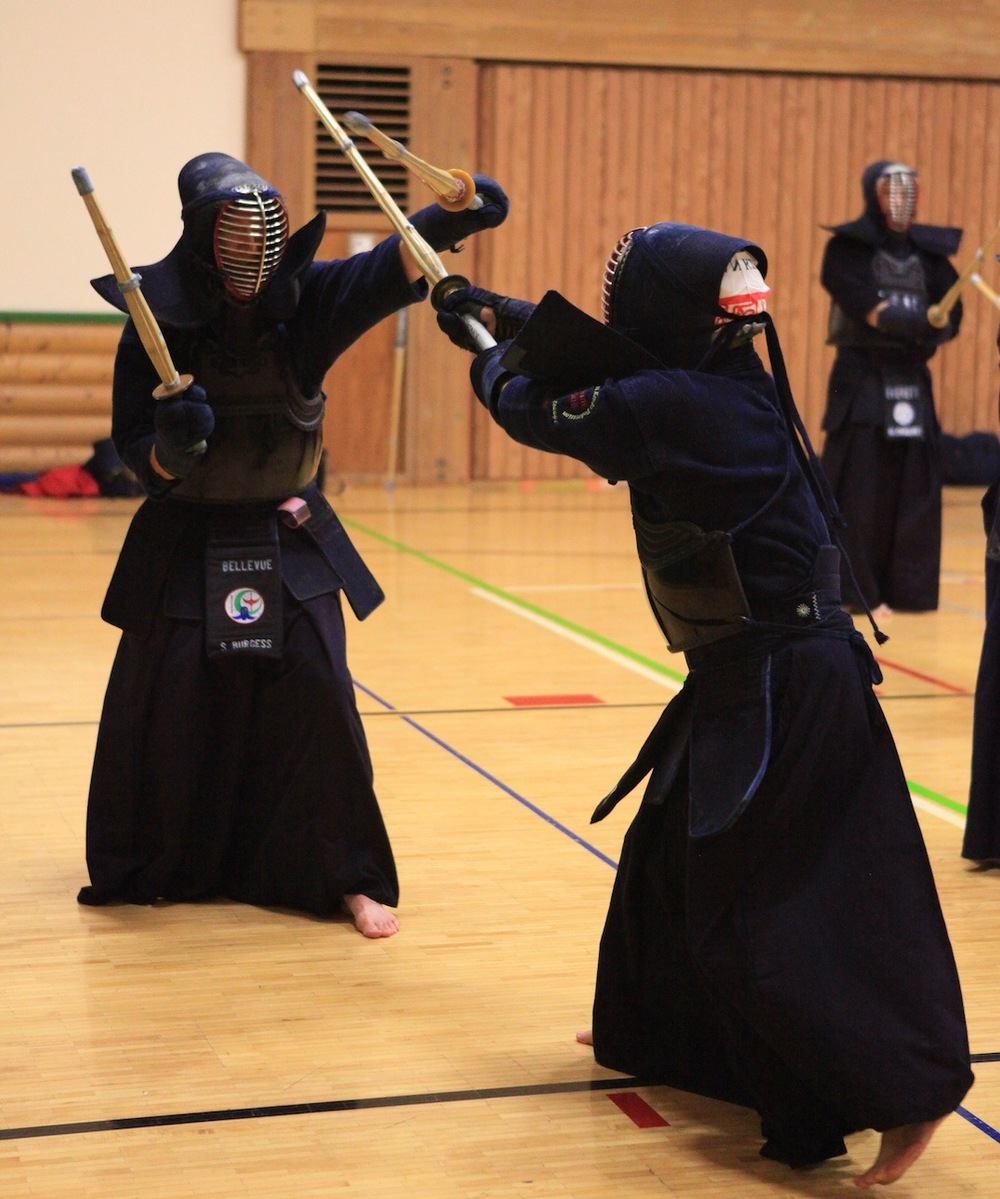"There's a hole in your Nito"
 playing with a 6 danI've been meaning to write an article on Kendo for some time, but the landscape is rich and varied, and it's hard to pin down a specific topic on such a broad category. However, a practice session a few weeks ago gave me my idea, which I owe to Marsten Sensei, Kyoshi nanadan (7th degree black belt).
playing with a 6 danI've been meaning to write an article on Kendo for some time, but the landscape is rich and varied, and it's hard to pin down a specific topic on such a broad category. However, a practice session a few weeks ago gave me my idea, which I owe to Marsten Sensei, Kyoshi nanadan (7th degree black belt).
First you have to understand where I'm coming from....a 56 year-old kenshi who took up Kendo at age 49, currently a 2 dan, who practices mostly once a week but if lucky, twice. Really, how good am I going to get at this age and at this level of practice? I refer to a document sent out to us from Marsten Sensei a few years ago, entitled Path to Excellence:
In kendo there is an old maxim that states 1,000 practices to temper and 10,000 practices to polish. Research has shown that to become an expert requires 10,000 hours of practice. When I refer to the chart, once per week means that it will take me 22.2 years to get in 1,000 practices. I would need 222.2 years to become an expert. Even upping my average to 1.5 times per week, I still need 14.8 years to temper and 148 years to polish. Methinks I may not have enough time, and it behooves me to approach Kendo in a manner that allows me to appreciate what I can get from it, and what I can give back. As in many things in life, the more I practice Kendo, the more I realize how much more there is to it, how much more I have to learn, how much I don't know. This is one of the great things to get from this extraordinary sport and martial art; there is always room for growth, you should never get bored, that it will always be interesting. Especially hard for older people is the concept of releasing your ego. The over 40 crowd will many times be accomplished in their personal and professional lives, and it can be extremely difficult to embrace the fact that in starting Kendo you are a rank beginner, pummeled by men, women and children alike with easy abandon. If you can't check the ego at the door then you are doomed, as there is no place for anger, revenge, belligerence; no room for gloating, chest beating or "take that" tactics. A favorite quote from one of our sensei: "people of low character don't do kendo: they either improve their character or quit."
Another reason I enjoy Kendo is the people; simply put, this is a great crowd, camaraderie abounds, friendships are made, and life is made richer just for hanging out with them. I originally took up Kendo in conjunction with my then 11-year old son so we could do it together. He has moved on and is currently not practicing, but what started out to be a family activity (many families practice Kendo together) is now solely a selfish pursuit, as there is no way I could consider quitting once hooked. And hooked I am, no doubt about it, in spite of my shortcomings of age and ability. Kendo is blind, and once you put on your men, the person across from you doesn't care if you're 16 or 60, so it becomes the great equalizer (at age 53 I somehow made it to the finals in an adult Mudansha (non-black belt) tournament: my opponent, a 16 year old. In how many other sports would this happen?). Now Marsten Sensei has been practicing for over 35 years, and in spite of him pushing 70 with a bad knee and bad shoulders, I had the pleasure of doing keiko with him recently, me in nito (two sword) and him in itto (one). One thing Sensei says is we should be glad when people score a good hit, as it shows a weakness in our Kendo and we should embrace this as an opportunity to improve, to figure out why we got hit. At the end of class I bowed to Marsten Sensei and, with a slight smile on his face, his only words to me were "there's a hole in your nito." And indeed there is, along with many other holes, but the great thing about Kendo is I was smiling inside, glad to be able to practice with people like Marsten Sensei, who will probably forever find a hole in my nito, and that's just fine with me.